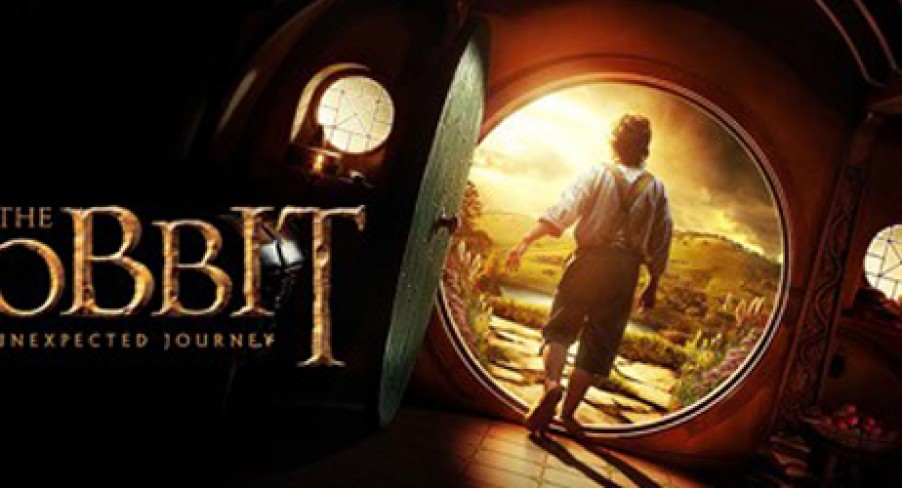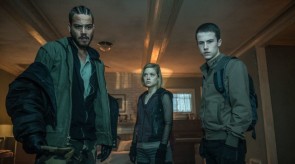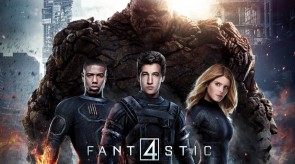Peter Jackson’s long awaited prequel to The Lord of The Rings has arrived, and it was worth the wait. For those of you unfamiliar with the story (if that’s more than 6 of you I’d be shocked) The Hobbit tells the tale of Bilbo Baggins who, 66 years before the events of The Lord of The Rings, went on a quest with a band of thirteen dwarves and Gandalf the wizard. The quest was to return the dwarves to their rightful home under The Lonely Mountain, where years ago they had been cast out by Smaug the dragon.
It’s all neatly summed up here:
An Unexpected Journey follows the first leg of this quest, or the first third of the story, or an arbitrary amount of the story as decided by Peter Jackson as he stretches the book out over a trilogy of movies. The division of the story probably causes the most problems for the film, as the story lacks an overarching protagonist who is overcome within the movie. It is a film which cannot stand alone. Jackson counters this by bringing a villain from Tolkien’s supporting tales and appendices to greater prominence here. There is also a successful character arc in how Bilbo earns the respect of the dwarves and a place in the group, even if the speech that culminates the arc is a little clichéd. So while it isn’t wholly satisfying, given all of the threads which are necessarily left for the next movies, a good sense of development, closure and climax is brought to the end of this chapter.
Another challenge for Jackson is tying the ambience of this tale to that of The Lord of The Rings Trilogy. While the book of The Lord of The Rings was a dark, serious and, at times, plodding affair, The Hobbit was always a childish adventure. It’s no small task to capture the essence of these books whilst keeping the world consistent across all of the films. To a large extent Jackson is successful. He manages to keep The Hobbit in the serious world of Rings, yet still allows it to be a world where a band of dwarves spontaneously bursting into merry song sits perfectly. There are times where the lighter nature is a bit jarring, there is a pervading sense of whimsy that we’re just not used to from the older films. Goblins zipping about in buckets on pulleys and trolls from The Three Stooges school of slapstick. There are plenty of jokes that work, and brilliant passages of humour, but the whimsy is something altogether different.
Fortunately the performances keep many of these elements in check. Bilbo’s struggle and growth is well realised. There is a very brief moment where Tim from The Office makes an appearance but mostly Martin Freeman thoroughly embodies the role of Bilbo. Similarly, Richard Armitage as Thorin Oakenshield, the leader of the dwarves, gives a wonderful performance as a troubled man (or dwarf) worth following into battle. The supporting players are also well portrayed, especially by Ian McKellan who has a tough job being the tie that binds this film to Rings. He does a great job playing the wise but fearful Gandalf the Grey, as opposed to the confident and powerful Gandalf the White we’re used to from the last two films in the Rings Trilogy. There is scope for Gandalf to develop into the character he is at the start of The Fellowship of The Ring. The role is somewhat sullied by an awkward and melodramtic monologue at one point, but there are plenty of monologues for McKellan to nail, and he does an admirable job being the backbone of the movie, leaving Freeman to focus on being its heart.
There is one instance of miscasting, Barry Humphries is confusing as the eloquent and powerful Great Goblin, a disconnect from the scurrying slimy creatures the goblins are. Fortunately he doesn’t deliver many speeches and most of the time spent with the goblins is on a sublime action sequence that highlights just how much of a virtuoso filmmaker Peter Jackson really is.
Much has been made of Jackson’s revolutionary use 48 frames per second instead of the usual cinematic standard of 24. The higher framerate delivers a startling crispness to the image and practically eliminates the muddiness which can be a barrier to viewing 3D movies. The opening sequence does suffer from this crispness. The extreme clarity making many shots seem as fake as, this being a work of fiction, they are. There are also a few moments where the sharpness of the image makes some of the special effects look like special effects, even if they are amazingly well done special effects. As the film moves on however, through a combination of your eye adjusting to the new style, and the filmmakers showing remarkable talent in using the new technology, the visuals relax and thoroughly engage rather than distract.
In many ways An Unexpected Journey is an episodic tale, as our merry band make their way across Middle Earth they encounter a few different challenges, some connected, others entirely standalone. It makes the arc of the movie hard to predict. It also makes The Hobbit have more in common with old and cheap fantasy films. Leaping from trolls to orcs to giants to goblins to elves and to mysterious creatures living under mountains worshipping jewellery. There’s a lot crammed in, but it all looks amazing. The characters are all well made, the story is well told. This is a very easy world to disappear into. For all of the nitpicking you might do over this film, you cannot deny how immersive the experience is. This is a film to get thoroughly lost in and remind you why the cinema is such a magical place.


